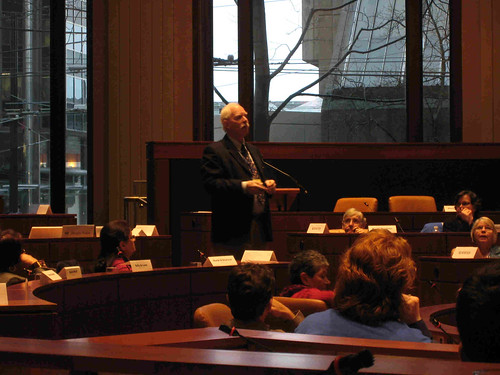
All credit to Dr. Carty, he’s actually a very good speaker and he did well to make his topic more interesting for his audience. It was just the case that his topic happened to be a bit on the technical and dry side.

At any rate, Dr. Carty started off by talking about how, under BC-STV, our 83 provincial ridings would be combined into 20, with 2-7 Members of the Legislative Assembly (MLA) in each. The electoral map that was proposed in the CA website is actually pretty close to what was but together by the EBC. The northern ridings would look like our current federal ridings while the Vancouver ridings would be a bit larger (Apparently, the current Vancouver provincial ridings already look like their federal counterparts. I’m not sure how it works out that way, but whatever).
Malapportionment, the discrepancy in riding populations from riding to riding, would be improved under BC-STV so that there would be greater uniformity in the ratio of MLA’s per voter. Supposedly, it’s more difficult to draw maps with smaller ridings leading to the greater variability that we currently see.
The number of MLA’s per riding, also known as the District Magnitude (DM), would range from 2-7. Half of the ridings, 10, would have a DM of 4, only one riding would have a DM of 2 and one would have a DM of 7. 16 ridings would have a DM of 4 or greater. This is significant because the higher the DM, the more proportional the election results. Interestingly enough, the average DM under BC-STV would be 4.15 compared to 3.86 for Ireland. So elections under STV in BC could or should actually be more proportional than in Ireland.
Dr. Carty then got into consequences of adopting BC-STV, the most obvious being fairer election results. There’s likely to be increased diversity as citizen’s would now have the opportunity to get representation from more than one party/candidate. Political parties and candidates would likely behave differently as the incentives provided by BC-STV vs FPRTP would be different. Parties likely wouldn’t run full slates, and there would be greater intra-party competition between candidates, affecting candidate behaviour both before and after elections.
Back to Musings Mainpage
No comments:
Post a Comment